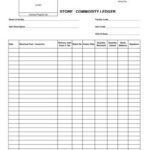Content
The current assets are cash or assets that are expected to turn into cash within the current year. One shortcoming of the metric is that the cash balance includes the minimum cash amount required for working capital needs. As a general rule of thumb, a current ratio in the range of 1.5 to 3.0 is considered healthy. But this compensation does not influence the information we publish, or the reviews that you see on this site. We do not include the universe of companies or financial offers that may be available to you.

This ratio compares a company’s current assets to its current liabilities, testing whether it sustainably balances assets, financing, and liabilities. Typically, the current ratio is used as a general metric https://kelleysbookkeeping.com/ of financial health since it shows a company’s ability to pay off short-term debts. A current ratio of 1.5 would indicate that the company has $1.50 of current assets for every $1 of current liabilities.
Current Ratio Definition
The current ratio is called current because, unlike some other liquidity ratios, it incorporates all current assets and current liabilities. By rule of thumb, if a company’s current ratio is above 1.00, it has sufficient current assets to cover its current liabilities. If a company’s current ratio is 1.50 or above, it has ample working capital to cover all current liabilities. Working out your liquidity ratio takes time and effort, but it’s absolutely essential knowledge for SMEs.

If the quick ratio is too high, the firm isn’t using its assets efficiently. While this formula offers insights into virtually any business vertical, it doesn’t adequately describe the SaaS model. The current ratio is expressed in numeric format rather than decimal because it provides a more meaningful comparison when using this to compare different companies in the same industry.
Current assets
Sammy has a store selling novelty toys and needs a business loan to move to a larger property so that he can stock more items. The bank needs to see the last three year’s balance sheets so they can analyze the current and long-term assets and liabilities. They include notes payable, account payable, accrued expenses, and deferred revenues. The ABC company currently has a ratio of 1, which means paying off its outstanding liability will be difficult. A ratio of 1 or less than 1 indicates that the company’s due obligation is more than its assets. In such a case, the ABC company will convert short-term assets into payable cash within this time.
- Licensing flexibility, unlimited growth potential, and scalability are some of the upsides of the SaaS business model.
- Quick ratio is similar to the current ratio, but it does not include inventory in the numerator because inventory isn’t always easily converted into cash.
- The current ratio and quick ratio (also known as the acid-test ratio) are both financial ratios that measure a company’s ability to pay off its short-term obligations.
- Conversely, software-as-a-service (SaaS) companies tend to have lower current ratios.
- For example, let’s say that Company F is looking to obtain a loan from a bank.
This can be achieved through better forecasting and demand planning, more efficient production processes, or just-in-time inventory management. This post is to be used for informational purposes only and does not constitute legal, business, or tax advice. Each person should consult his or her own attorney, business advisor, or tax advisor with respect to matters referenced in this post. Bench assumes no liability for actions taken in reliance upon the information contained herein.
How the Current Ratio Changes Over Time
Let’s say a business has $150,000 in current assets and $100,00 in current liabilities. That means the company in question can pay its current liabilities one and a half times with its current assets. Well, a company only has a limited amount of time to pay current liabilities, and the more current assets a company has, the easier it would be able to convert them to cash. It’s an important measure of liquidity because using short-term assets is better than having to sell long-term and possibly revenue-generating assets. They want to calculate the current ratio for the technology company XYZ Ltd which is based in California.
Learn all about current and quick ratios, how to calculate them, and the key differences between current ratio vs quick ratio. A current ratio figure expressed as a number simply tells analysts or investors the ability of a company to utilize its current assets to meet the current or short-term debts it has. The following is a recap of the vital points you need to know about the current ratio.
How can a company improve its current ratio?
Find out how GoCardless can help you with ad hoc payments or recurring payments. Square Terminal is the card machine for everything from managing items and taking payments to printing receipts and getting paid. With ProfitWell Metrics, you can monitor and break down your MRR into components such as new MRR, upgrades, existing customers, downgrades, and churn.
Our editors and reporters thoroughly fact-check editorial content to ensure the information you’re reading is accurate. Our editorial team does not receive direct compensation from our advertisers. GoCardless helps you automate payment collection, cutting down on the amount of admin your team needs to deal with when chasing invoices.
This makes it an important liquidity measure because it looks at a company’s ability to meet near-term obligations without resorting to selling long-term assets or taking on debt. The current ratio provides insight into a company’s liquidity and financial health. It helps investors, creditors, Current Ratio Formula and other stakeholders evaluate a company’s ability to meet its short-term financial obligations. A high current ratio indicates that a company has a solid ability to meet its short-term obligations. In contrast, a low current ratio may suggest a company faces financial difficulties.
- The primary difference between the two ratios is the time frame considered and definition of current assets.
- Conversely, a company with a consistently decreasing current ratio may take on too much short-term debt and have difficulty meeting its obligations.
- The use of sophisticated financial ratios such as quick and current ratios offers rarified insights into SaaS financials.
- Inventory management issues can also lead to a decrease in the current ratio.
Since the current ratio includes inventory, it will be high for companies that are heavily involved in selling inventory. For example, in the retail industry, a store might stock up on merchandise leading up to the holidays, boosting its current ratio. However, when the season is over, the current ratio would come down substantially. As a result, the current ratio would fluctuate throughout the year for retailers and similar types of companies. Most often, companies may not face imminent capital constraints, or they may be able to raise investment funds to meet certain requirements without having to tap operational funds.
What Are Some Common Reasons for a Decrease in a Company’s Current Ratio?
In contrast, a high current ratio may indicate that a company is not investing in future growth opportunities. It is important to note that the optimal current ratio can vary depending on the company’s industry. For example, companies in industries with high inventory turnover, such as retail, may have lower current ratios due to the high inventory value on their balance sheets. While Company D has a lower current ratio than Company C, it may not necessarily be in worse financial health. The retail industry typically has high inventory levels, which can increase a company’s current assets and current ratio. Therefore, it is essential to consider the industry in which a company operates when evaluating its current ratio.
- The company reports show they have $500,000 in current assets and $1,000,000 in current liabilities.
- That means your current assets exceed your current liabilities and you have enough resources to fulfill your upcoming obligations.
- As such, the current ratio formula may not be the best metric to use for determining your business’s short-term liquidity.
- Creditors and lenders also use the current ratio to assess a company’s creditworthiness and determine whether or not to extend credit.
- Another practical measure of a company’s liquidity is the quick ratio, otherwise known as the “acid-test” ratio.
Because buildings aren’t considered current assets, and the project ate through cash reserves, the current ratio could fall below 1.00 until more cash is made. For example, the inventory listed on a balance sheet shows how much the company initially paid for that inventory. Since companies usually sell inventory for more than it costs to acquire, that can impact the overall ratio. Additionally, a company may have a low back stock of inventory due to an efficient supply chain and loyal customer base.


